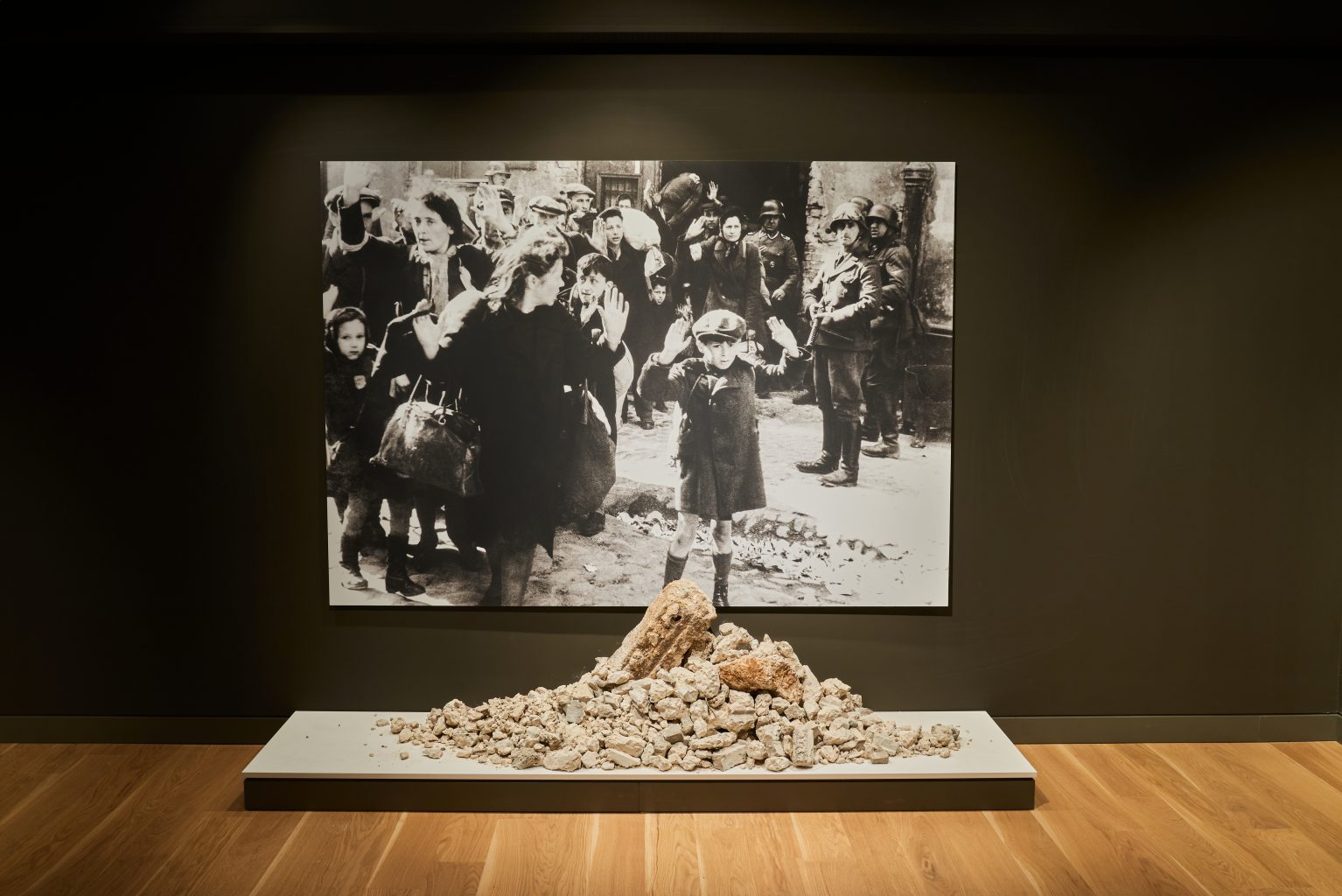Gustav Metzger / Historic Photographs: No. 1: Liquidation of the Warsaw Ghetto, April 19-28 days, 1943, 1995/2009 born 1926 died 2017 / black and white photograph, rubble /
This sculptural installation uses the well-known photograph known as the Warsaw Ghetto boy, taken during the 1943 Warsaw Ghetto uprising. Metzger contrasts the ubiquitous nature of this iconic image with a mound of rubble, thereby marking the ingredients of trauma and memory by materializing the ever-present reality of the Holocaust.
Must Know
Gustav Metzger was born in Nuremberg, Germany in 1926. Born to Jewish parents in Nuremberg in 1926, he arrived in Britain in 1939 as a child on the Kindertransport. His parents and most of his immediate family members would perish in the Holocaust. A survivor of the Holocaust, Metzger’s first-hand experience of displacement and destruction shaped his subsequent outlook on the relationship between art and society. Initially trained as a painter, Metzger published the Auto-Destructive Art Manifesto (1959), which called for the production of artworks with industrial materials and a limited lifespan which, in his words, “reenacts the obsession with destruction, the pummeling to which individuals and masses are subjected.” These ideas were most dramatically realized in London in 1961, where he sprayed sheets of nylon with hydrochloric acid, burning them to tatters. His work has gone on to touch on issues of nuclear disarmament, war, and environmental destruction. Metzger has continuously viewed his role as an artist as one that seeks radical social and political change. By 1958, Metzger had become heavily involved in anti-capitalist, anti-consumerist movements and the Campaign for Nuclear Disarmament. In 1960, he was a founder member of the anti-war group, the Committee of 100.
More Info
“Historic Photographs.” confronts the viewer with one of the most powerful and tragic images of twentieth-century history, which Metzger has enlarged. The resulting work invites interaction and provokes powerful physical experiences that transmit the emotional and intellectual weight of history. The The work confronts the ubiquitous nature of this iconic photo and constructs a relationship between the viewer and the image that is intimate, performative, and sustaining of historical memory. he forces us to reengage with historical trauma and speak to the inescapability of evil.
he describes himself as a “perpetual refugee,” remained an outsider all his life, and, as a matter of principle, had no citizenship.
Metzger envisaged art as a means of communicating the futility and horrors of conflict and war.

